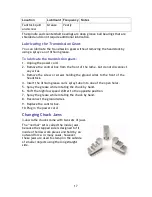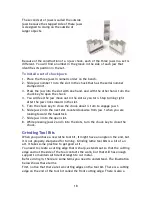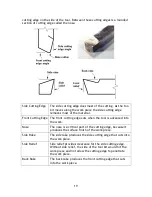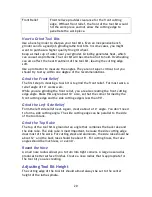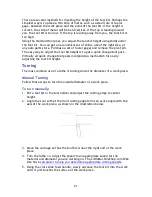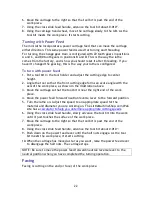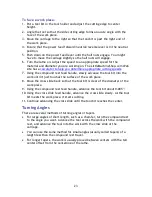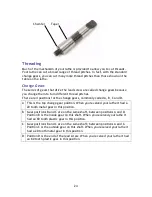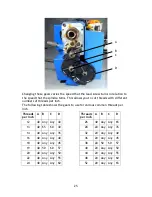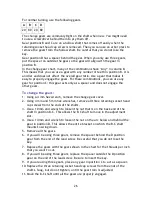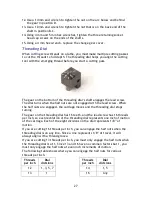
12
turning between centers. Turn the lever clockwise to lock the tailstock quill,
and counterclockwise to unlock the tailstock quill.
Adjustments
Keeping your lathe in adjustment is an ongoing process. You should check all
the following adjustments when you set up your lathe and then periodically as
you use your lathe.
Carriage
The carriage is held on the ways by two adjustable retaining plates that are
bolted to the bottom of the carriage.
There are several fasteners in the carriage retainers. The socket head cap
screws are used to adjust the position of the retainers. The setscrews and lock
nuts lock the adjustments in place.
To adjust the carriage retainers:
1.
Remove the right lead screw mounting bracket.
2.
Disconnect the apron by removing the two socket head cap screws through
the front of the carriage.
3.
Slide the apron to the right and off the lead screw.
4.
Loosen all the fasteners on both retainers.
5.
Snug the socket head cap screws so the carriage can move, but without
play.
6.
Snug the setscrews. Do not over tighten or you might break the retainers.
7.
While holding the setscrews from turning, tighten the lock nuts.
8.
Replace the apron.
9.
Replace the right lead screw mounting bracket.
Cross Slide Gibs
A gib is a strip of metal placed between the bearing surface of two machine
parts to ensure a precision fit and provide adjustment for wear. The mini lathe
has gibs in several places, including the cross slide.
To adjust the cross slide gibs:
1.
Loosen the three lock nuts on the side of the cross slide.
2.
Slightly loosen all three setscrews on the side of the cross slide.
3.
Snug each setscrew equally. This will lock the cross slide in position.
4.
Loosen each setscrew 1/8 turn to allow the cross slide to move.
5.
While holding the setscrews from turning, tighten the lock nuts.
6.
Test by turning the handle. Loosen or tighten all the setscrews the same
amount until the cross slide moves freely, but without play in the dovetail.

















